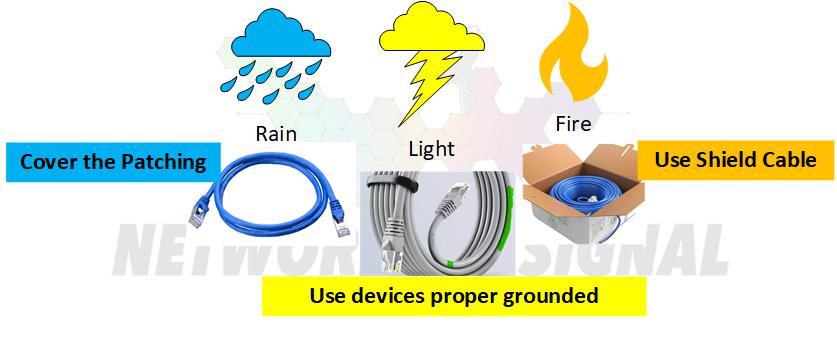Lightning strikes can have a significant impact on underground infrastructure, including cables used for data transmission. Cat6 ethernet cables are commonly used for networking and data communication. It is important to understand how lightning can affect these underground cables and take measures to protect equipment.
As our reliance on data networks increases, it becomes more crucial to ensure underground cabling and equipment are properly shielded from electrical surges caused by lightning.
This knowledge helps prevent network downtime, data loss, and expensive equipment damage. Properly protecting infrastructure avoids disruptions to business operations and services.
Explanation of lightning strikes
Lightning is a massive electrostatic discharge that occurs during electrical storms. It can carry a current of over 100,000 amps and temperatures of 30,000°C. When lightning strikes the earth, the current seeks the path of least resistance and can travel through the ground and into infrastructure.
Lightning current flowing through underground cables can induce voltage spikes and electromagnetic interference. This can cause damage to cable insulation and conductors. The lightning charge can permanently destroy electrical components.
Voltage and current surges from lightning strikes can damage networking equipment like routers, switches, and modems. This can lead to corrupted data transmission and loss of network functionality. Lightning also poses a safety risk to personnel from electrical hazards.
- Example: A school lost network functionality after a lightning strike fried Ethernet switches. A small business suffered equipment damage and lost data after underground line surges. Proper grounding and surge protection could have mitigated the damage in both cases.
What happens if lightning strikes cat6 underground?
For those of us who are familiar with cat6 cabling, we know that it is a type of Ethernet cable that is used for very high-speed data transfer. It is also one of the most popular types of cables for home networking.
But what happens if this cable is struck by lightning?
It is important to know that cat6 cabling is very durable and can withstand a lot of wear and tear. However, it is not impervious to damage. If the cable is hit by lightning, it can cause serious damage to the infrastructure.
If you have ever seen a picture of a lightning bolt, you know that they are incredibly hot. When this heat comes into contact with the metal in the cable, it can cause the metal to melt. This can damage the connectors and the cable itself. In some cases, it can even cause fires.
Lightning is also very unpredictable. It can strike anywhere, at any time. This means that if you have cat6 cabling buried underground, there is a chance that it could be struck by lightning.
Does electricity interfere with CAT6?

CAT6 is not electrical wiring and thus is not susceptible to interference from other electrical devices or power lines. However, if there is a severe storm with high winds, it’s possible that physical damage to the cable could occur.
How do I protect my Ethernet from lightning?
You can protect your Ethernet connection from lightning by using a surge protector. This will help to dissipate the electrical charge before it has a chance to damage your equipment.
Here are the other tips for preventing damage to your Ethernet connection from lightning:
- Grounding systems
Grounding connections give the electrical current an alternative path to follow. Effective grounding is critical to divert lightning surges away from electronics and cables. Proper grounding equals the potential between equipment and the earth to prevent damage.
- Surge protectors and arrestors
Surge protectors and lightning arrestors contain metal oxide varistors (MOVs) that limit voltage. They short excess current to the ground and prevent voltage spikes from reaching equipment. Proper rating and installation are important for these to be effective.
- Lightning conductors
Lightning rods and conductors assist in directing the lightning strike’s electrical current into the ground. They minimize potential damage by providing a direct path to Earth. Lightning conductors must be properly sized.
- Importance of proper installation
Maximize protection with adequate grounding bonds, surge arrestors, and conductors. Follow manufacturer guidelines for installation and inspect electrical connections periodically for integrity. Proper installation provides a safe path for lightning energy discharge.
What are the symptoms of a damaged Ethernet connection?
If your Ethernet connection has been damaged by lightning, you might notice a few things.
- You may see sparks or smoke coming from the point of damage.
- You may also hear a loud popping noise.
Should I unplug the Ethernet cable during a thunderstorm?
There is no need to unplug your Ethernet cable during a thunderstorm, as there is no danger of electrocution. However, you may want to disconnect any devices that are plugged into the wall socket, as there is a small chance that a power surge could occur.

